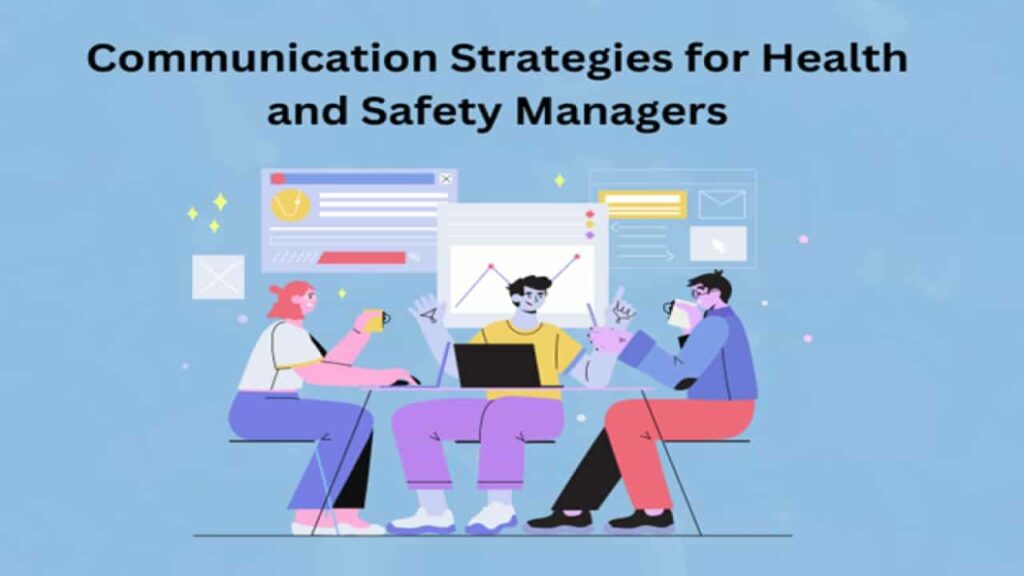
-
Save
Ensuring the well-being of employees and the success of safety initiatives within an organisation relies on the health and safety manager’s ability to communicate effectively. Excellent communication skills are required for any role involving the transmission of critical safety procedures, the resolution of concerns, or the promotion of a safety culture. IOSH Certification Courses help to enhance communication proficiency and contribute to overall safety excellence by safety professionals. This blog will discuss strategies for effective communication by the Health and Safety Manager and how they help your organisation’s safety programs.
The Importance of Communication for Health and Safety Managers
Health and safety managers are essential when creating and sustaining a risk-free workplace. To reduce risks in the workplace, it is their job to put safety policies into action, evaluate potential dangers, and educate workers. But these practices are not reach to the employees if we can’t communicate well.
Ensuring all employees understand and follow safety procedures requires clear and concise communication. It aids in raising consciousness about possible dangers and gives people the agency to safeguard themselves and their co-workers. Furthermore, it promotes trust and transparency when employees can express their concerns and participate actively in safety initiatives.
Communication Strategies for Health and Safety Managers
01. Tailor Your Message to the Audience
It is important to remember that various departments and teams within the company may care about and comprehend safety issues differently. If you want your message to connect with your audience, you must tailor your delivery to their unique interests and requirements. Whatever audience you’re trying to reach—frontline employees, management teams, or external stakeholders—your message needs to be concise, relevant, and easy to understand.
02. Utilize Visual Aids and Demonstration
Posters, infographics, and instructional videos are great ways to explain complicated safety ideas in a way anyone can understand. Training sessions and toolbox talks can benefit from visual demonstrations to help attendees better understand and remember important information. Workplace safety procedures can be reinforced with the help of visual aids.
03. Promoting Open Dialogue
Ensure employees have chances to share their ideas, opinions, and concerns about safety in a two-way conversation. Promote an approachable policy where people can approach you with inquiries or criticisms. Take the time to hear them out and quickly resolve any concerns or questions they may have. In addition to increasing participation and trust, this promotes teamwork in safety management.
04. Lead by Example
As a manager in charge of health and safety, your deeds should speak louder than words. Set a good example by always doing what’s needed to keep yourself and others safe on the job. Maintain a visible presence on the work floor, participate in safety inspections, and talk to employees about safety. How you conduct yourself sends a message to everyone in the company about how seriously we take safety.
05. Provide Ongoing Training and Education
A safe work environment can only be sustained with a commitment to lifelong learning. Provide staff with ongoing education through seminars, training, and refresher courses to ensure they are up to date on all safety rules, policies, and practices. To better understand how to manage safety and communicate safety concerns, it is recommended that individuals enrol in IOSH Certification courses. Employees can better contribute to safety initiatives when you put money into their professional development.
06. Use Technology to Facilitate Communication
Leverage technology to simplify communication processes and distribute safety information efficiently. Use technology to facilitate communication. Keep your staff informed of developments by sending them email newsletters, intranet portals, and mobile apps. Make it easy for workers to communicate with safety management by setting up online reporting systems for incidents and hazards.
07. Seek Feedback and Continuous Improvement
Ask for employee opinions on how healthy communication strategies and safety initiatives work regularly. Use that information to improve your strategy. Gather ideas for how to improve by holding surveys, focus groups, or individual meetings. Improve your communication strategies, fill in knowledge gaps, and find ways to boost safety performance using feedback.
Conclusion
The foundation and success of efficient health and safety management is effective communication. Health and safety managers can achieve their goals of employee engagement, safety culture promotion, and process improvement through targeted communication strategies. Improving managers’ communication abilities through IOSH Certification programmes gives them the edge they need to do their jobs well and positively affects their employees’ health and safety. For more information, you can check this page out: The Knowledge Academy
-
Save

